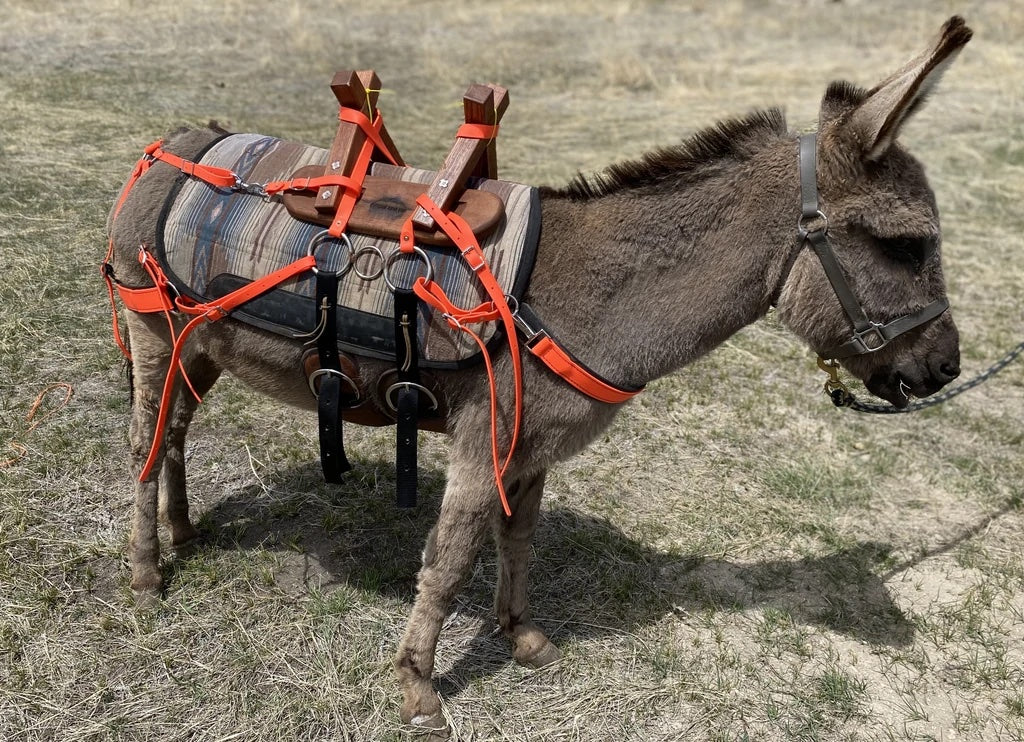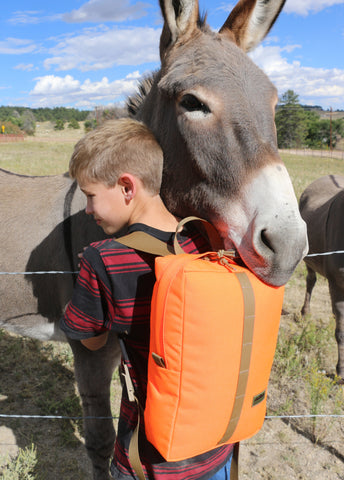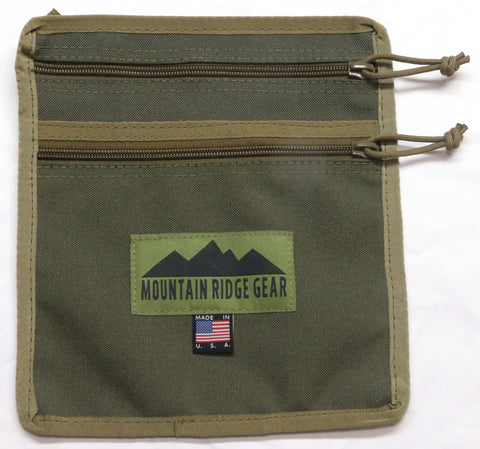Pack Saddling a Donkey
Any donkey wrangler knows that a donkey preforms better when they are comfortable. I’ve spent the better part of the last 10 years figuring out how to keep donkeys comfortable and happy. I’ve created saddles and tack that are designed specifically for donkeys. To get the most out of your trail companion there are five major things to consider when putting a pack saddle on a donkey: a proper fitting donkey saddle, saddle position, cinch placement, a proper pad and correctly adjusted breeching and breast collar.
The most important part of the equation is a properly designed saddle. The saddle should conform to the slope of a properly conditioned donkey’s back. I’ve spent a lot of time figuring out the correct size and slope of the saddle. Most standard donkeys that are from 44” at the shoulder up to about 13.2 hands will need an 18” bar. Donkeys over 13.2 hands normally need a 21” bar. It is a delicate balance of weight distribution and pressure points over the scapula and kidneys.
Even if you have a saddle that is designed for a donkey, if the saddle is positioned incorrectly it will make your donkey sore. Most of the issues I have seen with saddle fit are saddles that are set too far forward over the scapula. To check the position, put the saddle on the donkey, place your fingers under the pad, run the tips of your fingers along the top of the scapula and make sure your fingers are not under the bar of the saddle. If so, slide the saddle back. The other factor that effects saddle fit is the donkey’s condition. Even small fat deposits along the upper part of the ribs can cause the saddle to fit incorrectly and create sore spots along the outer edge of the bars. If your donkey has a bit of a weight problem don’t over load them. Pack lightly until the fat packets are gone.
Donkeys are not shaped like horses. The belly of a donkey is shaped more like a tear drop. So, if a front cinch is too tight it will ride forward and cause skin abrasions. Also, because the chest is so narrow, over tightening a front cinch will cause stress for the donkey. A snug rear cinch is much more effective on a donkey. Always tie the cinches together so that the snug rear cinch will keep the front cinch from riding forward. A tight rear cinch will keep the saddle and pad in place and the donkey will be much more comfortable.
Wool pads have been around for hundreds of years and they are widely used on horses. However, I’m not convinced that a wool pad is the best solution for a donkey. For some reason (one I haven’t figured out yet) wool pads seem to slide around on a donkey’s hair. I like synthetic pads preferably with some sort of tacky, rubbery material against the donkey’s hair. I am not a fan of neoprene because it is too hot. Because a properly conditioned donkey shouldn’t have fat on it’s ribs, I use a pad that is at least 1” thick. Never use a saddle blanket by it’s self under a pack saddle.
Finally, always use properly adjusted breeching and breast collars. Because the donkey doesn’t have withers and has a straight back the saddle can slide back and forth on undulating terrain. The breeching keeps the saddle from riding over the shoulder blades. It should be adjusted below the pin bone so that the strap rests flat against the back of the donkey’s legs. Be sure it’s not too far down so it doesn’t restrict movement. The breast collar should be just below the bend of the neck over the shoulders. Both the breaching and breast collar should be adjusted loose enough so that the saddle can move back and forth 1.5” to 2”. Never over tighten them otherwise you will wear the hair off the donkey.
Keeping your donkey comfortable is important. A properly fitted and positioned saddle along with snug cinches, a nice pad and correctly adjusted breeching and breast collar will do the trick. A donkey will endure a lot for it’s handler so it is up to us to make sure it doesn’t have to.




Dana Walters
I have 2 dokey so that are 2 yes old. Thanks I haven’t had a saddle on them and am now starting to look for some. How do I figure out the proper size for them. From what areas should I measure?
Thanks, Dana